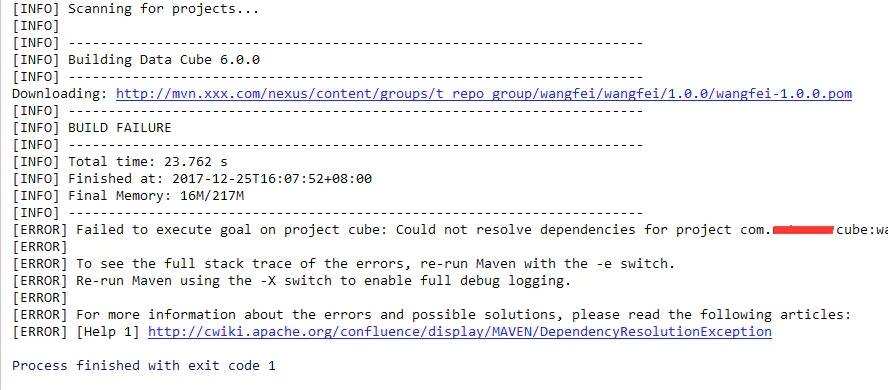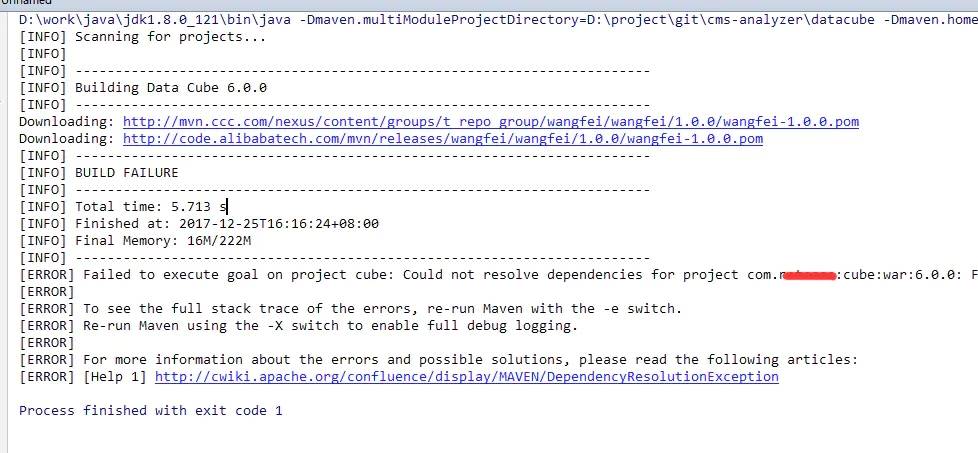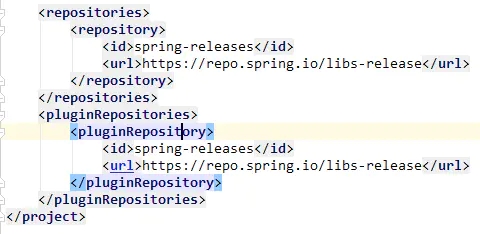Maven settings.xml中私有仓库配置 Java Maven settings.xml中私有仓库配置详解
人气:0Maven setting中私有仓库配置浅析
最近遇到过不少这样那样的问题,曾经做过maven的分享,但是发现当时部分内容还是太想当然了,下面经过尝试后简单总结下:
首先几个逻辑:
- pom>启用的profile>maven原有配置
- mirror配置mirrorOf和id匹配优先
简单maven配置
一般大家的配置(略去无关私有仓库配置)都是这样的
<mirrors>
<mirror>
<id>nexus</id>
<name>mvn.xxx.com</name>
<mirrorOf>central</mirrorOf>
<url>http://mvn.xxx.com/nexus/content/groups/t_repo_group/</url>
</mirror>
</mirrors>
<profile>
<id>dev</id>
<repositories>
<repository>
<id>nexus</id>
<url>http://mvn.xxx.com/nexus/content/groups/t_repo_group/</url>
<releases><enabled>true</enabled></releases>
<snapshots><enabled>true</enabled></snapshots>
</repository>
<repository>
<id>alibaba</id>
<url>http://code.alibabatech.com/mvn/releases/</url>
<releases>
<enabled>true</enabled>
</releases>
<snapshots>
<enabled>false</enabled>
</snapshots>
</repository>
</repositories>
<pluginRepositories>
<pluginRepository>
<id>nexus</id>
<url>http://mvn.xxx.com/nexus/content/groups/t_repo_group/</url>
<releases><enabled>true</enabled></releases>
<snapshots><enabled>true</enabled></snapshots>
</pluginRepository>
</pluginRepositories>
</profile>
<activeProfiles>
<activeProfile>dev</activeProfile>
</activeProfiles>
mirrors
这个标签重要的属性包括id、mirrorOf。id用来唯一区分。mirrorOf用来关联repository。
url用来表示私服地址。
mirrorOf常见大家配置成*、central、repo啥的。这里刚才提到了是用来关联respository的,等提到下面<respository>标签的时候在解释。
profile
这个就简单说下吧,就是算是个配置,可以配多个,具体哪个生效可以通过mvn命令指定,或者配置<activeProfiles>
repositories
这里面算是配置的重点
<repository>
<id>alibaba</id>
<url>http://code.alibabatech.com/mvn/releases/</url>
<releases>
<enabled>true</enabled>
</releases>
<snapshots>
<enabled>false</enabled>
</snapshots>
</repository>
几个重要的配置,一目了然吧,id标识,url地址,是否从该仓库下release,是否从该仓库下快照版本。
这里就有人会懵逼了,这里怎么又配了个地址,跟mirrors里面的地址哪个生效呢?
好的,那咱们试试。先规定一下配置:
<mirrors>
<mirror>
<id>nexus</id>
<name>mvn.ws.netease.com</name>
<mirrorOf>central</mirrorOf>
<url>http://mvn.xxx.com/nexus/content/groups/t_repo_group/</url>
</mirror>
</mirrors>
<repositories>
<repository>
<id>nexus</id>
<url>http://mvn.ccc.com/nexus/content/groups/t_repo_group/</url>
<releases><enabled>true</enabled></releases>
<snapshots><enabled>true</enabled></snapshots>
</repository>
</repositories>
把地址区分下,mirror里配成xxx,repository配成ccc
随便找一个项目,设定一个不存在的依赖,mvn -U compile下:

可以发现去ccc找了。说明repository里的生效了。
那么mirror里的地址什么时候生效呢?其实刚才说了,mirror里的是靠mirrorOf中的内容和repository中id关联的。比如我们把刚才配置改为
<mirrors>
<mirror>
<id>nexus</id>
<name>mvn.ws.netease.com</name>
<mirrorOf>central</mirrorOf>
<url>http://mvn.xxx.com/nexus/content/groups/t_repo_group/</url>
</mirror>
</mirrors>
<repositories>
<repository>
<id>central</id>
<url>http://mvn.ccc.com/nexus/content/groups/t_repo_group/</url>
<releases><enabled>true</enabled></releases>
<snapshots><enabled>true</enabled></snapshots>
</repository>
</repositories>
把repository中的id改成central

这样就行了。此外mirrorOf中可以配置通配符,例如*,表示任何repository都和这个关联。
其实简单来说就是如果repository的id能和mirrorOf关联上,那么url以mirror的为准,否则以repository中自己的url为准。
其他还有一些点,repositories中可以配置多个repository,配置多个话,一个找不到会找下一个,比如我们在刚才基础上加上阿里的配置
<repositories>
<repository>
<id>nexus</id>
<url>http://mvn.ccc.com/nexus/content/groups/t_repo_group/</url>
<releases><enabled>true</enabled></releases>
<snapshots><enabled>true</enabled></snapshots>
</repository>
<repository>
<id>alibaba</id>
<url>http://code.alibabatech.com/mvn/releases/</url>
<releases>
<enabled>true</enabled>
</releases>
<snapshots>
<enabled>false</enabled>
</snapshots>
</repository>
</repositories>
在构建一次:

当配置多个时,会逐一进行下载尝试。
总结
咱们在回顾下起初的配置,可以看到启用的profile是dev,dev中的repository的id是nexus,跟mirrorOf没有匹配,那么生效的配置就是repository中自己的url配置,所以这里完全可以省略掉mirror的配置。当然如果多个profile公用一个私服地址,也可以指定mirror地址,然后repository中的id指定成和mirrorOf相同,同时可以省略掉自己标签中url。
此外还有几个点要说,pluginRepositories,配置信息基本和repository一致,不过这个地址是用来下maven的插件的,就是pom中这样的配置
<plugins>
<plugin>
<artifactId>maven-war-plugin</artifactId>
<version>2.6</version>
<configuration>
<filteringDeploymentDescriptors>true</filteringDeploymentDescriptors>
<webResources>
<resource>
<directory>${basedir}/src/main/webapp/WEB-INF</directory>
<filtering>true</filtering>
<targetPath>WEB-INF</targetPath>
<includes>
<include>**</include>
</includes>
</resource>
</webResources>
</configuration>
</plugin>
</plugins>
还有,pom也可以指定repository:

这样配置会和settings.xml中生效的配置合并,并优先从这个库找,找不到继续走settings.xml配置。
本篇文章就到这里了,希望能够给你带来帮助,也希望您能够多多关注的更多内容!
加载全部内容